This article was medically reviewed by Luba Lee, FNP-BC, MS and by wikiHow staff writer, Hunter Rising. Luba Lee, FNP-BC is a Board-Certified Family Nurse Practitioner (FNP) and educator in Tennessee with over a decade of clinical experience. Luba has certifications in Pediatric Advanced Life Support (PALS), Emergency Medicine, Advanced Cardiac Life Support (ACLS), Team Building, and Critical Care Nursing. She received her Master of Science in Nursing (MSN) from the University of Tennessee in 2006.
This article has been viewed 23,934 times.
If you need to regularly inject insulin, you’ll go through many needles and need to dispose of them. Since insulin needles are considered “sharps,” you can’t throw them away in your regular trash can. Luckily, there are easy ways you can dispose of your used needles and syringes safely. Put the needles in a strong plastic container as soon as you use them so you don’t risk harming other people with them. Once the container is nearly full, many places can dispose of them properly.
Steps
Storing Needles at Home
-
1Get a sharps container from a doctor or pharmacy for storing needles safely. Sharps containers have a solid plastic body so there isn’t a risk of them poking through the sides. Contact your local pharmacy or doctor’s office to see if they have sharps containers available. Some doctors may provide a sharps container for free while others will have them for sale.[1]
- Sharps containers usually cost around $10–15 USD.
-
2Put needles in an empty laundry detergent bottle or milk jug for a DIY sharps container. Choose a detergent bottle that’s opaque and has thick plastic so the needles don’t poke out from the sides. An empty plastic milk jug will also work. Place a piece of tape on the outside of the bottle and label it “Sharps” in large letters so other people don’t confuse it with actual detergent. Make sure the detergent bottle has a lid to make sure none of your insulin needles are exposed.[2]
- Don’t use a clear container for disposing sharps since children or drug users may try to open the bottle if they see syringes or needles.
- You can also use a metal or plastic coffee container for your needles.
Advertisement -
3Place insulin needles in the container as soon as you use them. Don’t leave used needles lying around since they could hurt other people. Right after your injection, open the lid on the sharps container you’re using and drop the needle inside. Immediately seal the container so the needles can’t spill out. When you’re finished, put the container on a high shelf out of children’s reach.[3]
- You do not need to clip the needles before you put them in your sharps container.
Warning: Don’t try to recap the needles after you use them since you may accidentally poke yourself.
-
4Tape the container closed once it’s ¾ full. Look inside your container every time you put another needle inside of it to check how full it is. Once the needles are ¾ to the top of the container, secure the lid with pieces of duct tape so it can’t come undone. Place the container in a safe place, such as a high shelf, until you’re able to throw it away properly.[4]
- Some sharps containers you purchase from pharmacies will automatically stay closed as soon as they’re full.
- If you have trouble how full your container is, draw a line on the outside of the container with a marker so you know where the maximum fill line is. Hold the container up to a light so you can see how many needles you have inside.
Disposing of Sharps Containers
-
1Check with waste management to see if sharps containers can go in the trash. Contact your city’s waste management service and ask them if sharps are allowed in your normal trash disposal. If they are, place the sharps container in 1–2 plastic bags and tie them tightly so the container doesn’t spill out. Put the container in your trash can or a dumpster so waste management can dispose of it.[5]
- Some locations do not allow you to mix sharps containers with your regular trash.
Warning: Never put the sharps container in your recycling bin since the recycling facility won’t be able to process the needles.[6]
-
2Contact local hospitals or pharmacies if you can’t put sharps containers in the trash. Many hospitals and pharmacies are required by law to accept sharps containers since they regularly dispose of them. Call the hospital or pharmacy where you want to drop off your container and find out what specific requirements they have for throwing away the sharps. Follow any of the guidelines they have before you drop off your container so they can throw them away safely.[7]
- Make sure your sharps containers are clearly labeled before dropping them off so there isn’t any confusion.
-
3Use a sharps disposal site to find other locations near you to get rid of needles. Visit a website for proper sharps disposal and type in your ZIP code in the search bar. Use the map on the website to find locations where you can take your sharps container to have professionals get rid of it for you. Click on the locations to find out any additional requirements that they require for throwing away your sharps.[8]
- You can find a map of sharps disposal locations here: https://safeneedledisposal.org/.
- Some locations may even offer pick-up services so you don’t have to leave your home to get rid of your sharps.
Warnings
- Never throw needles or syringes directly in your trash can since you can seriously hurt someone if they poke through or stick out.⧼thumbs_response⧽
- Don’t recycle sharps containers since recycling centers can’t process them.⧼thumbs_response⧽
Things You’ll Need
- Sharps container or thick plastic container
- Marker
- Duct tape
- Garbage bags
References
- ↑ https://diabetes.ufl.edu/outreach/resources/getting-rid-of-used-needles/
- ↑ https://www.fda.gov/medical-devices/consumer-products/safely-using-sharps-needles-and-syringes-home-work-and-travel
- ↑ https://diabetes.ufl.edu/outreach/resources/getting-rid-of-used-needles/
- ↑ https://uncw.edu/ehs/documents/sharpsdisposal.pdf
- ↑ https://dpw.dc.gov/service/proper-disposal-needles-and-sharps
- ↑ https://diabetes.ufl.edu/outreach/resources/getting-rid-of-used-needles/
- ↑ https://www.dec.ny.gov/chemical/9082.html
- ↑ https://safeneedledisposal.org/


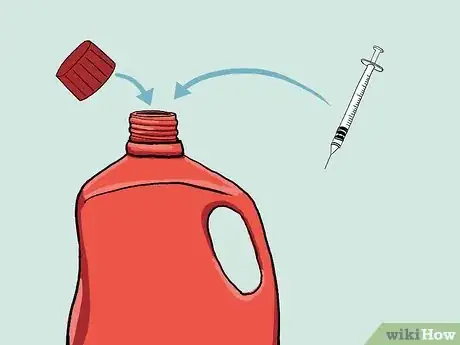

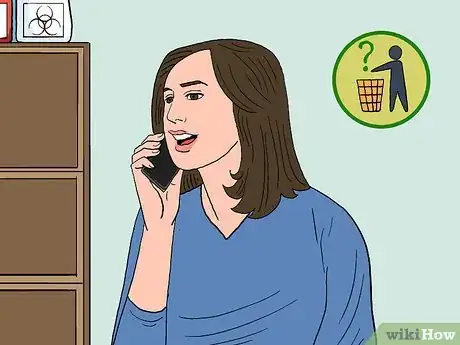


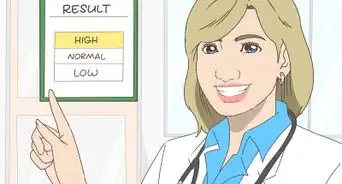



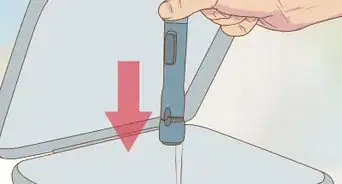



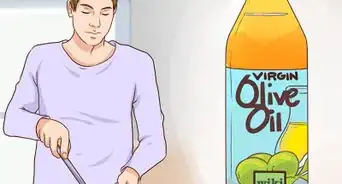











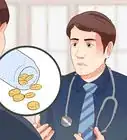





































Medical Disclaimer
The content of this article is not intended to be a substitute for professional medical advice, examination, diagnosis, or treatment. You should always contact your doctor or other qualified healthcare professional before starting, changing, or stopping any kind of health treatment.
Read More...